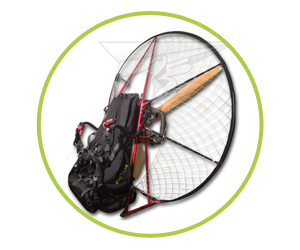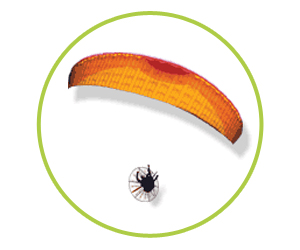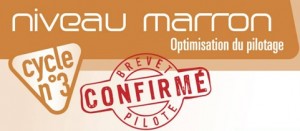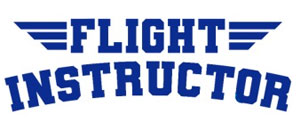Here are some tips to get started in paragliding and/or paramotoring
Flying with a piece of fabric and a few strings is magical, whether with or without an auxiliary motor.
Paragliders and paramotors are recreational vehicles that can also be used in competitions or extreme sports.
This sport and the mindset that comes with it simply represent a way of life that everyone dreams of.
Admiring the landscapes sitting on a chair in the middle of the sky provides an unparalleled sense of freedom that makes us want to share some tips to help you make the most of our experience!
Tip N°01 :
What are the age and weight limits?
In theory, there is no age limit and the weight limit goes up to 110kg
In practice, our activities are more specifically aimed at a public aged 6 to 99 whose BMI (Body Mass Index) does not exceed 35, as we must ensure that the seat size is suitable for the person's build.
- If your BMI (Body Mass Index) = weight(kg)/height(m)² is greater than 35, it is better to come see us to try our equipment before purchasing your activity.
- Example: If you weigh 110kg and are 1.80m tall, everything is fine because your BMI = 34
Tip N°02 :
Will I get vertigo?
If you don't get vertigo in an airplane, you won't get it with a wing because vertigo only appears when you are stationary.
If you have never flown before, choose a level 1 mini-training with a 15-minute mini-flight that can be reduced to 2 minutes if you feel unwell ( first flight + )
Tip N°03 :
I have no experience. Which training should I start with?
Paragliding and paramotoring are increasingly popular sports, and you can often see them flying around you.
To discover these unforgettable sensations for yourself, you have two options:
- If you want to fly immediately and learn to control a wing, you can start with a first flight +.
- If you prefer to fly without being accompanied by an experienced pilot, theoretical and practical training that will allow you to fly solo is offered in the form of an initiation course of 5 sessions. During your first flights and given the little experience you will have at the end of this training, you will be placed in optimal aerological conditions for your safety.
Tip N°04 :
Should I do a tandem flight before signing up for an initiation course?
The quickest way to discover the sky is to do a
first flight +. This mini-training allows you to escape, accompanied by a licensed pilot, to discover the benefits of this sport and understand how our wings fly.
If you wonder why birds sing while flying, you will know thanks to this sensational experience that is the tandem flight.
During a
first flight + paragliding/paramotoring, the instructor will ensure the flight from take-off to landing. They will offer you to pilot the craft and explain how our wings fly, what their limits are, and how they stay in the air.
If you are sure that you want to learn to fly solo, a
first flight + is not mandatory, and you can directly sign up for an initiation course.
It will allow you to discover the equipment that will be provided to you, learn wing inflation techniques, take-off, and landing. The practical lessons will be complemented by theoretical lessons at the end of which you will make your first solo flights.
Don't panic, during your first flights, you will be guided by radio from take-off to landing.
Attention: after an initiation course, you will know how to take off, fly, and land on an easy site in easy aerological conditions, but you will not yet be able to determine if the site and the day's aerology are suitable for your level.
If you are hooked and wish to continue training, several advanced training options will be offered to you, and you will then be able to purchase your own equipment with full knowledge.
Expect about fifteen additional sessions to feel really comfortable handling the wing and understanding the external elements to fly serenely and safely.
Tip N°05 :
Paragliding / Paramotoring, what's the difference?
Paragliding
- Definition: Paragliding is a soft wing, usually launched from a height (such as a mountain or hill) and allows gliding using ascending currents to prolong the flight.
- Propulsion: Paragliding has no motor. It depends entirely on weather conditions and the pilot's skills to stay in the air.
- Launch: Take-off is usually from a high point, running to inflate the wing and launching into the air.
- Use: Paragliding is often used for recreational flights, distance and precision competitions, as well as acrobatic flights.
- Portability: Paragliding equipment is light and easily transportable, allowing it to be carried on foot to remote launch sites.
Paramotoring
- Definition: Paramotoring is a paraglider equipped with a motor and propeller, allowing take-off from flat ground and flying independently of weather conditions.
- Propulsion: Paramotoring is propelled by a motor, allowing take-off and flight even in the absence of ascending currents.
- Launch: Take-off is usually from flat ground. The pilot wears the motor on their back and starts the propeller to rise into the air.
- Use: Paramotoring is used for recreational flights, aerial travel, aerial photography, and sometimes for search and rescue missions.
- Portability: Although heavier than paragliding due to the motor, paramotoring remains relatively portable and can be transported in a vehicle.
Summary
Propulsion
Paragliding: No motor
Paramotoring: With motor
Take-off
Paragliding: From a height
Paramotoring: From flat ground
Use
Paragliding: Free flight, recreation
Paramotoring: Motorized flight, recreation, aerial travel
Possibilities
Paragliding: Pilots, with a few exceptions, mostly make descending flights whose duration depends on the height difference between take-off and landing (descent rate 1m/s).
Paramotoring: By adding an auxiliary motor, the flight duration does not essentially depend on the pilot's skills but on the amount of energy carried (electric or thermal).
When the paragliding take-off spot is not next to the office, taking off with a paramotor from a field or your garden (you need a few meters like here:
https://youtu.be/Em0gaty0J28) is the ideal solution to fly almost every day.
Tip N°06 :
Is it better to start with paragliding or paramotoring?
Learn to ride a bike before moving on to a scooter: once you are comfortable with your paraglider (about 5 to 10 sessions), you can add a motor to your wing as you only need to learn to control a throttle.
Tip N°07 :
Is it possible to accompany someone who has an appointment for an activity?
No problem accompanying one or more people during level 1 activities (first flight+ and discovery session). However, it is more complicated to accompany people registered for level 2 and 3 training due to higher travel constraints.
Tip N°08 :
How many days to become autonomous and receive a pilot's license?
Expect about 15 consecutive morning lessons to be confident with your equipment in an environment you do not yet fully master.
You will receive a certificate but will only be at the beginning of your autonomy.
After five mornings (level 2 initiation course), you will be able to make your first big solo flight but accompanied by radio by your instructor (this flight is usually done with a non-motorized paraglider).
Expect about ten additional mornings to obtain your Paramotor or Paraglider pilot's license.
Flying is a commitment that requires knowing your specific equipment, the environment in which you fly, and developing self-control.
By following your instructor's advice while listening to your body and mind, you will reduce the risk of accidents and increase your chances of flying for years.
Beginner level
You are a student in training
Intermediate level
Expect 15 to 20 hours of flight to obtain your pilot's license
Advanced level
After 100 hours of flight, you become an autonomous pilot
Guru level
Your level is that of an instructor
Tip N°09 :
Should I buy my equipment before signing up for training?
Do not buy your equipment before the end of your initiation course (level 2)
The wing and possibly the motor must be adapted to your needs, your morphology, and your character. This is why all the latest generation equipment is provided during an initiation course.
To best choose the equipment with which you can evolve solo or in advanced courses, take advantage of our advice and long experience.
To fly, you will need: a paragliding wing or sail, a harness, possibly an auxiliary motor (to fly longer), and a rescue parachute.
You can complete your equipment with a helmet, a radio, a pair of gloves, a pair of sunglasses, and suitable shoes.
Tip N°10 :
Where to find take-off spots to fly near you?
You are now ready to embark on this beautiful adventure, but you wonder where you can fly?
Good news, there are sites almost everywhere in the world! On this page, you will find the different places where you can fly without an auxiliary motor:
https://club.mosailes.com/fr/content/70-c-est-ou-que-ca-voleMore good news, you can join our club, through which you can continue to evolve by benefiting from the experience and advice of its members.
You can also
- Share unforgettable moments
- Discover new spots together
- Exchange your impressions and experiences
- Travel differently and discover countries like you've never seen them before
Mountainous areas were the first places where paragliding developed, but with the explosion in equipment performance, the best pilots can now fly for hours without an auxiliary motor, taking off from small elevations of less than 100m (distance record in Moselle, 155km in 2001 and more than 200km in 2020).
Tip N°11 :
Can I take my equipment on vacation?
Yes :)
A backpack for the paraglider and possibly another backpack for the motor (everything fits in the trunk of a small car).
Tip N°12 :
When can I start?
In Moselle, the season for learning to fly is generally between March and October, but your own availability will guide you in choosing the dates.
Weather-wise, in spring, the aerology is generally more unstable, which favors distance flights but also local showers. In summer, the days are longer, barbecues are more common, but it is also hotter on the fields used by beginner pilots. In autumn, the aerological conditions are calmer, the air is cooler, but the end of the season is approaching.
In short, each season has its advantages and disadvantages, but it is possible to learn to fly at any time.
We are open 7 days a week and offer training almost all year round.



 MosAiles News
MosAiles News 




